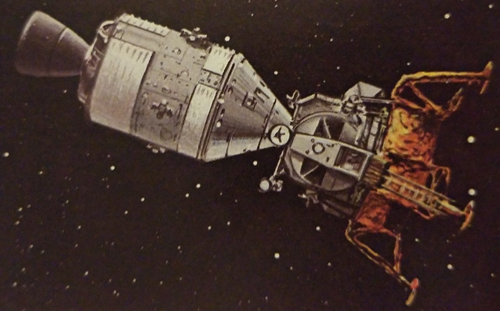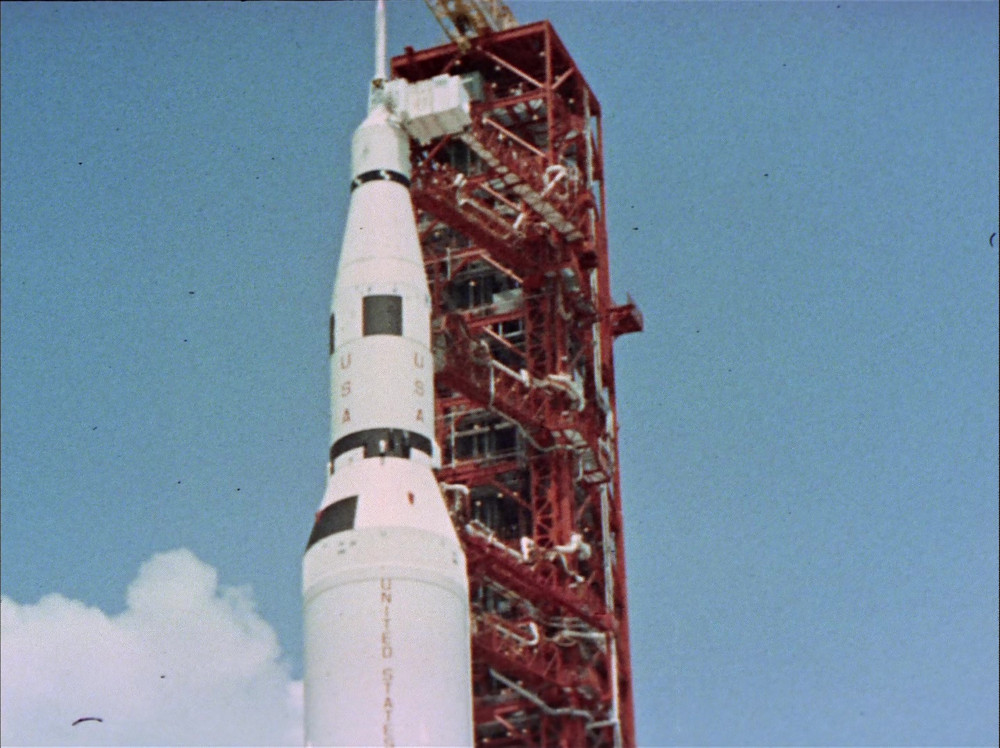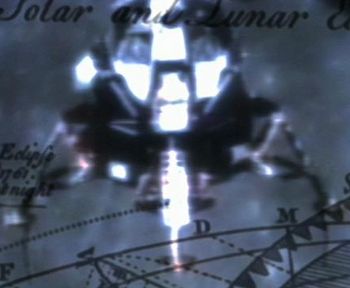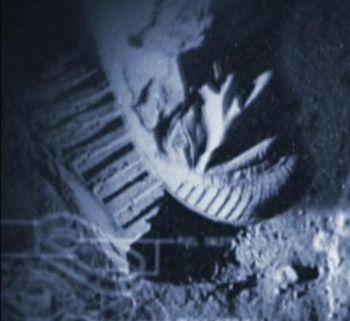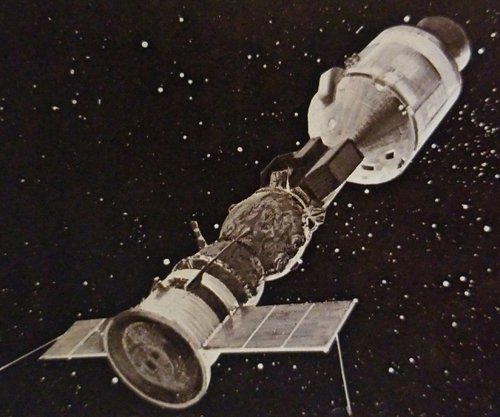Apollo program
| First Appearance | TOS16 (24 Nov 1966) |
| Advertising |
The Talosians viewed several images about Earth's Moon and programs to study and explore it while accessing the U.S.S. Enterprise NCC-1701's computer in 2254.[1][2]
Apollo 8
In an historic first, the 3-man crew of Apollo 8 journeyed around the moon in 1968, observing and photographing the natural satellite and viewing "Earthrise."[3]
Apollo 11
On 20 July 1969, the age-old dream of landing a man on the moon was accomplished by Apollo 11, whose Lunar Module landed in the Sea of Tranquility. Astronauts Neil Armstrong and "Buzz" Aldrin remained on the surface for 21 hours 36 minutes.[3][4][5]
Apollo 13
Disaster was averted in 1970 as Apollo 13, which experienced a power failure en route to the moon, was skillfully swung around the satellite and brought safely back to Earth.[3]
Apollo 14
In 1971, Apollo 14 landed at Fra Mauro on the moon, the destination originally chosen for the ill-fated Apollo 13.[3]
Apollo 15
In 1971, Apollo 15 landed in Hadley Rille on the moon.[3]
Apollo 16
In 1972, Apollo 16 spent more than 71 hours on the lunar surface.[3]
Apollo 17
Apollo 17 marked the end of NASA's manned lunar missions, spending a record 75 hours on the moon and returning with 113.6kg of lunar material.[3]
Apollo 18
In 1975, Apollo 18 and Soyuz XIX linked up in space, culminating two years of cooperation between the United States and the Soviet Union.[3]
Notes and References
- ↑ Roddenberry, Gene (Executive Producer). "The Cage". Star Trek, season 0, episode 0 (Production number 01). Directed by Robert Butler. Written by Gene Roddenberry. Released 1986. Desilu Productions. 1965.
- ↑ The year that "The Cage" takes place, 2254, is derived from information given in "The Menagerie." Spock states that it has been 13 years since the incident on Talos IV, and that he served under Captain Pike for 11 years. Therefore, the episode is in the second year of Captain Kirk's five-year mission, which began in 2265, per the Star Trek: Voyager episode "Q2." Therefore, "The Menagerie" is set in 2267, and thirteen years prior to that is 2254.
- ↑ Jump up to: 3.0 3.1 3.2 3.3 3.4 3.5 3.6 3.7 Goldstein, Stan et al (Authors). Spaceflight Chronology. Star Trek. Book. Wallaby Books. 1980.
- ↑ Wheeler, Wm. John et al (Authors). Cadet's Orientation Sourcebook. Star Trek: The Role Playing Game. Book 2004A, Second Edition. Cover art by Rowena. Graphics and layout by Dana Knutson and Jordan Weisman. FASA Corporation. 1983.
- ↑ Berman, Rick & Piller, Michael & Taylor, Jeri (Executive Producers). "Threshold." Star Trek: Voyager, Season 2, Episode 15. Directed by Alexander Singer. Story by Michael De Luca. Teleplay by Brannon Braga. Paramount Pictures Corporation, 29 January 1996.
